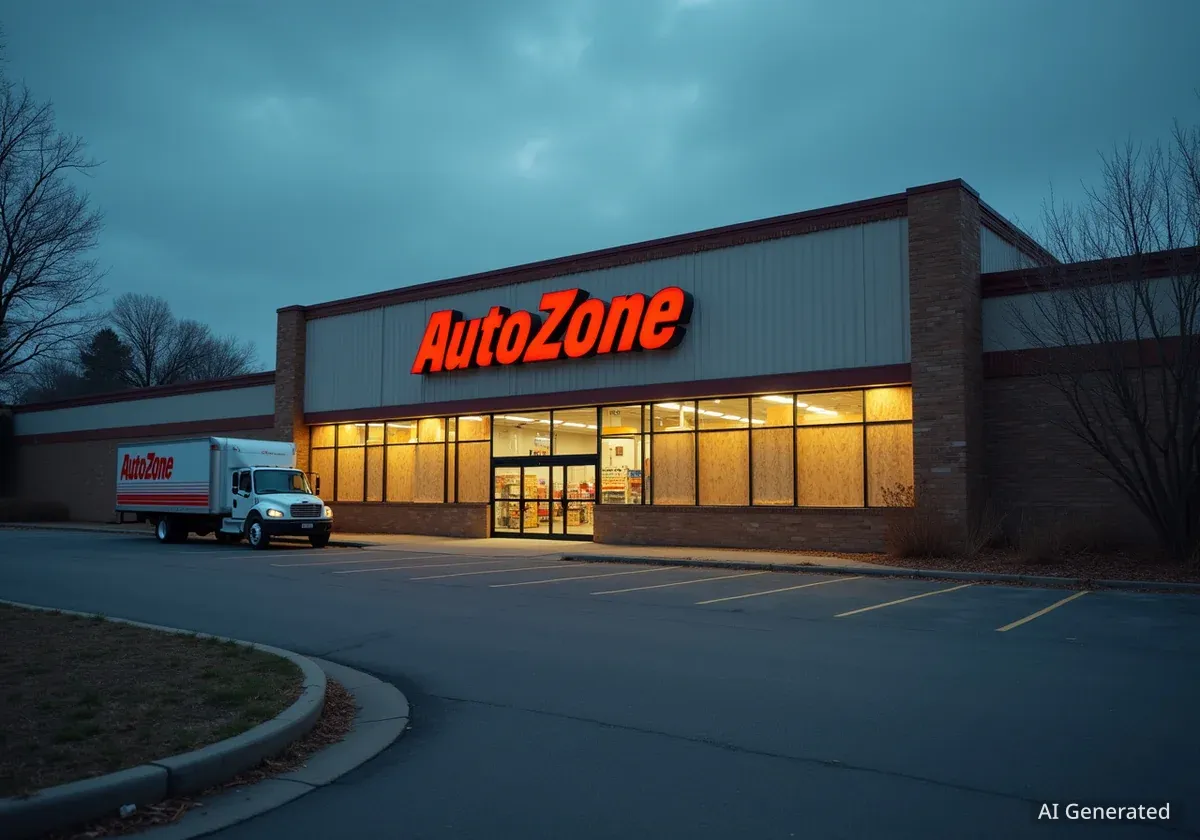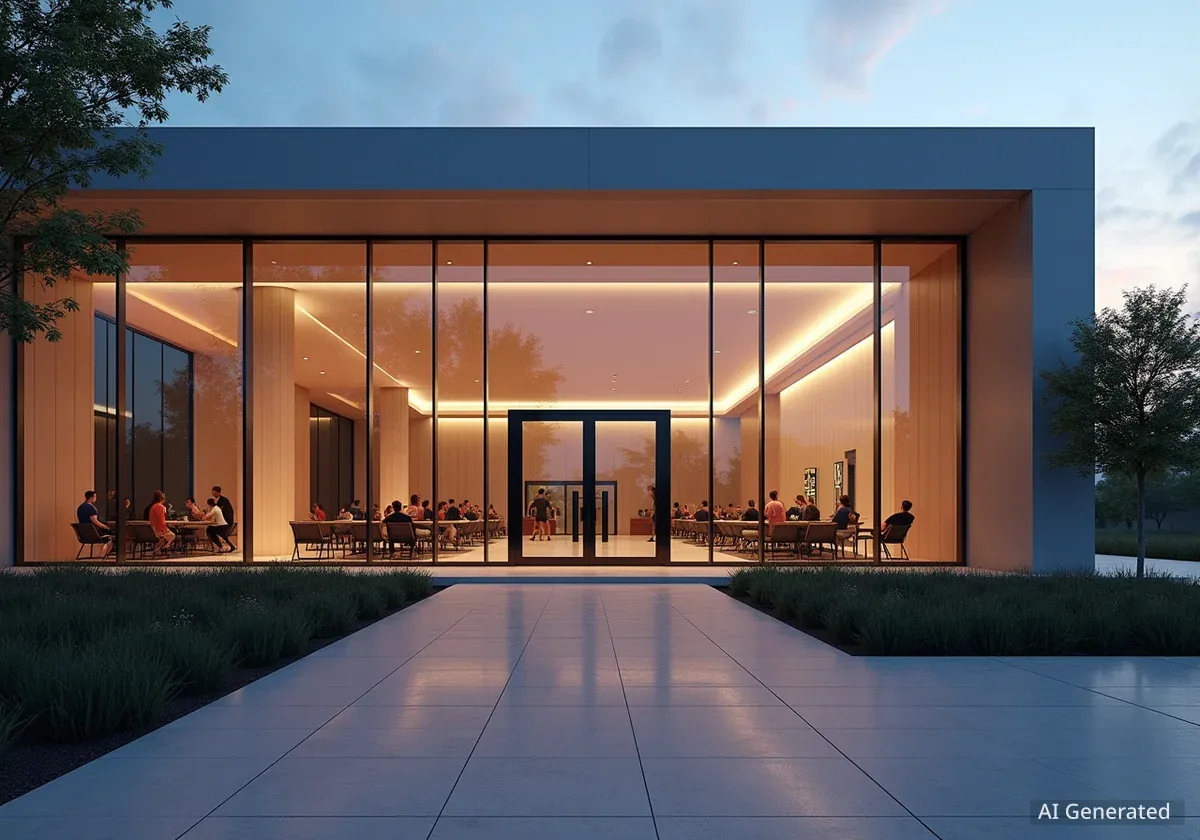AutoZone is accelerating its expansion by transforming large, vacant retail spaces left behind by bankrupt chains into new 'Mega Hub' stores. This strategy allows the auto parts retailer to secure prime real estate and significantly increase its product inventory and distribution capabilities, with a goal of nearly tripling its current Mega Hub count.
Key Takeaways
- AutoZone is repurposing former big-box stores from retailers like Bed Bath & Beyond, Toys R Us, and Kmart into large-format 'Mega Hubs.'
- These Mega Hubs are up to 50,000 square feet and stock over 100,000 unique products, compared to 6,500 square feet and 21,000 products in a standard store.
- The company plans to open 25-30 new Mega Hubs in Fiscal Year 2026, advancing toward its ultimate target of 300 locations.
- The larger stores serve as local distribution centers for smaller satellite stores and have shown sales performance significantly above the company's average.
A New Strategy for Retail Growth
As the American retail landscape shifts, AutoZone has identified a significant opportunity in the vacant properties of former industry giants. The company is actively leasing and converting these empty buildings to fuel the growth of its 'Mega Hub' store format, a key component of its future strategy.
During a recent earnings call for Fiscal Year 2024, company executives highlighted the success of this model. The expansion is focused on giving both commercial and do-it-yourself (DIY) customers faster access to a much wider range of parts.
Mega Hubs vs. Standard Stores
The difference in scale is substantial. A typical AutoZone store occupies about 6,500 square feet and carries approximately 21,000 different product stock-keeping units (SKUs). In contrast, a Mega Hub can be as large as 50,000 square feet and hold an inventory of over 100,000 SKUs. This allows them to function as mini-warehouses, supplying surrounding standard-sized stores.
Driving Sales and Market Share
The Mega Hub model is proving to be a powerful driver for AutoZone's business. These larger stores consistently outperform the company's other commercial programs. According to company reports, Mega Hubs generate weekly sales results that are well above the 9% average for its commercial do-it-for-me (DIFM) business.
AutoZone CFO Jamere Jackson stated on the company's earnings call that Mega Hubs “drive a tremendous sales lift inside the store box as well as serve as an expanded assortment source for other stores.”
Jackson also noted that the increased parts availability has delivered a “meaningful sales lift” across both the professional mechanic (DIFM) and individual consumer (DIY) segments of the business. This success is prompting the company to increase the pace of new openings.
Accelerating the Expansion Plan
AutoZone's expansion is moving quickly. By the end of its 2025 fiscal year, the company was operating 133 Mega Hubs. Notably, 14 of those were opened in the final three months of that year alone.
Expansion by the Numbers
- Current Mega Hubs: 133
- Planned for FY 2026: 25 to 30 new locations
- Long-Term Goal: 300 Mega Hubs nationwide
The company is still less than halfway to its final target of 300 locations, which it believes is necessary to fully support its entire network of existing and future stores. The availability of vacant big-box real estate is critical to achieving this goal.
From Bankrupt Retailers to Auto Parts Hubs
The primary source for these new locations is the real estate left behind by retailers that have filed for bankruptcy. Initially, AutoZone repurposed stores from chains like Kmart and Toys R Us, which closed their doors over seven years ago. Today, approximately 10% of all AutoZone Mega Hubs are in buildings once occupied by these two brands.
More recently, the company has turned its attention to retailers that have faced financial trouble in the last few years.
Recent Examples of Repurposed Spaces:
Many of the stores planned for 2026 will occupy spaces from retailers that went bankrupt in 2023 and 2024. Specific examples include:
- A 28,000-square-foot former Bed Bath & Beyond in Dayton, Ohio, which AutoZone leased in May.
- A 45,000-square-foot former Big Lots in Tucson, Arizona, leased in June.
- A 32,000-square-foot former Big Lots in Decatur, Georgia, leased in July.
- A 33,000-square-foot former Rite Aid in Toledo, Ohio.
Looking ahead to its Fiscal 2027 targets, AutoZone is expected to consider properties from even more recent closures. Retailers like Joann Fabrics, which filed for bankruptcy in early 2025 and closed around 800 stores, could provide a new wave of potential locations for this ongoing expansion strategy.





